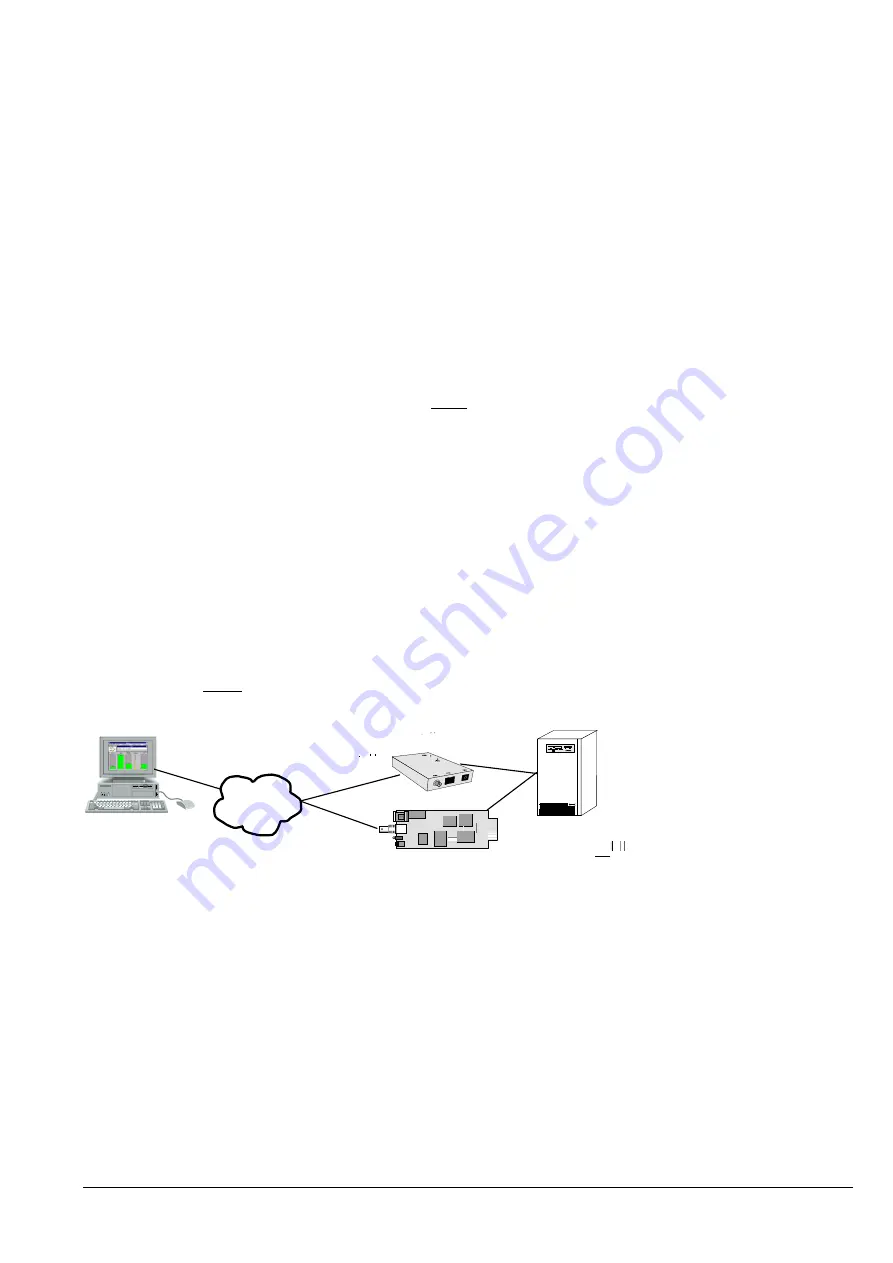
Section-9
04-3004_S9_OPM_ABB_POWERSCALE_10-50 kVA_EN_150113.doc
Page 5/6 ABB
Printed in Switzerland
– Modifications reserved
-
Every alarm on any unit is immediately notified, but …
-
… a reaction to a serious fault is introduced only when the minimum number of UPS –Modules
necessary to supply the load exhibits an alarming situation.
-
The real Battery autonomy time of the (whole) parallel system is computed continuously.
-
Maintenance on a redundant unit may be executed without annoyance to the management system
(supervisor).
In order to be managed, an UPS can be integrated into a network in two ways:
1. By means of the server which is being powered by the UPS and is integrated in the network. In most
of the cases the server is used as sub-agent and you only need the PMC-Software without any
SNMP Adapter. You need a standard serial connection between the RS232 JD11 port of the UPS
and the RS232 port of the computer/server.
2. In some situations it is preferable to interface the network via an SNMP adapter. By this way up to 50
computers can be shut down in a RCCMD environment. RCCMD (Remote Console Command) is an
additional software module, which can be triggered by the SNMP device to executes a command
(typically a shutdown command) on a remote system.
9.1.5
SNMP CARD/ADAPTER FOR NETWORK MANAGEMENT /REMOTE MONITORING
The
S
imple
N
etwork
M
anagement
P
rotocol (SNMP) is a worldwide-standardized communication-protocol. It is used
to monitor any device in the network via simple control language. The UPS-Management Software also provides its
data in this SNMP format with its internal software agent. The operating system you are using must support the
SNMP protocol. We offer our software with SNMP functionality for Novell, OS/2, all Windows running on INTEL
and ALPHA, DEC VMS, Apple.
Two types of SNMP interfaces with identical functionality are available: an external SNMP-Adapter (Box) and an
internal SNMP-Card. Both can manage a parallel system (N modules) and return either global values - which are
consistent for the whole parallel system - or specific values from the single modules.
Figure 1.5 SNMP Adapter
The adapter may be configured via Telnet, HTTP (Web-Browser) or serial connection (Terminal). For normal
operation at least one network connection (Ethernet) is required.
The SNMP adapter can be used, utilizing the RCCMD send function, for an automatic network wide shut down or
just for informing connected users. The shut down procedure can be initiated on a low residual battery autonomy
time (downtime) or by a countdown timer which is started at the beginning of the alarm. A shut down is therefore
possible without extra input from the operator, and is fully software controlled.
Internal SNMP-Card
UPS
Ethernet
9
External SNMP-Adapter
















































